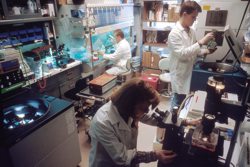Astrology
Astrology is a Spiritual Science
Astrology and Science
Science & Astrology: How the Split
Modern Science is not the Only
Why Science Puts Astrology Down
Validation in Science & Astrology
Unity and Diversity in Science
The Price of Scientific Objectivity
The Art of Cherry Picking in Science
Astrology and Psychology
Psychology's Invasion of Astrology
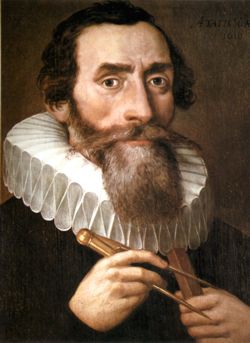
Johannes Kepler (1571-1630) is famous for the laws of planetary motion. He was an active professional astrologer, who made significant
contributions towards the effective techniques of astrology.
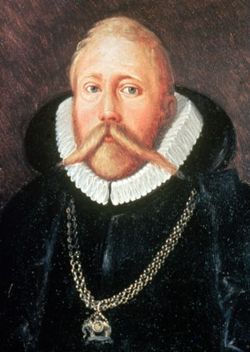
Tycho Brahe (1546-1601) is remembered as a great Danish astronomer. He was also very well versed in astrology and focused a great deal of
time and energy in creating more accurate ephemerides that those in common usage.
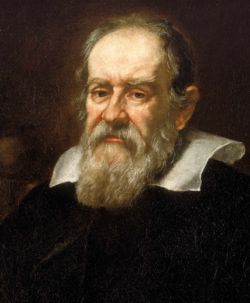
Galileo Galilei (1564-1642) has often been presented as the torch bearer of modern science. Nevertheless, he was a practicing astrologer, who not only found himself under house arrest by the church for his views, but also experienced considerable criticism by later science writers for his his astrological work.
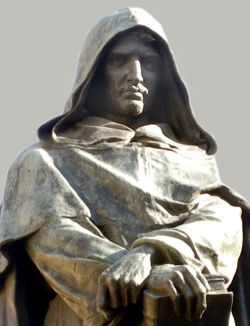
Giordano Bruno (1548-1600) was a Dominican friar and astrologer, who was burned at the stake by the Roman Inquisition for his views, which maintained an experiential stance to astrology as an inner and outer spiritual science.
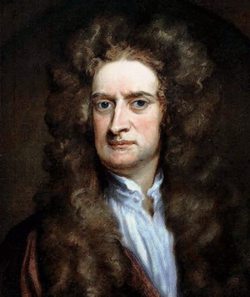
Sir Isaac Newton (1642-1727) is remembered for among other things, his laws of gravitation, his famous publication: Principia Mathematica that laid the basis for celestial mechanics, his discoveries in optics that led to the reflecting telescope and as a co-discoverer of calculus.
Nevertheless, Sir Isaac Newton was an alchemist first and a scientist second. As an alchemist, his inner scientific search included a profound understanding and acceptance of the validity of astrology.
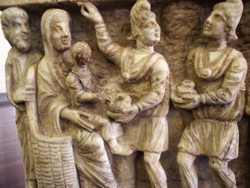
A relief depiction of the the 3 Magi from the 3rd century. Vatican Museum, Rome.
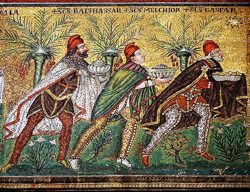
Credit: Nina Aldin Thune
The 3 Magi, Italian-Byzantine, mosaic, 565 AD. Basilica of Sant'Apollinare Nuovo, Ravenna, Italy.
Scientists in a laboratory. Have you ever wondered why scientists tend to be depicted in white lab coats, regardless of their field of research? It is in part because in many ways, science does behave as a religious order.
Science and Astrology:
How the Split Happened
by Roman Oleh Yaworsky. Copyright © 2014
This article originally appeared in
www.astrologyhoroscopereadings.com
Today there is a rift between science and astrology. That rift has only existed for the last several centuries. That rift is ironic, because in a very real historical sense, astrology is very much the parent of the physical sciences.
A Little Background
Not very long ago, it was an established world view that our civilization traced it roots back to Greek and Roman times and later to Mesopotamia. What established this view, was that for a large part of Western history and during the major part of the middle ages, only writings from Latin and later Greek were allowed to be read or copied. Other sources were considered evil or even anathema.
When new access to Latin and Greek science and philosophies of antiquity began to be openly permitted, and then physically made possible with Johannes Guttenberg's development of the printing press in the early 1400's, it inevitably greatly contributed to the spawning of the renaissance.
Until about the middle of the renaissance, there was very little conflict between religion, science and astrology. In fact, many of the key figures of science were intimately familiar with astrology, and some practiced astrology. Among them were names like Newton, Kepler and Galileo. Many of these early scientists explored the world around them at the physical and spiritual levels, and they did not see a distinction between a study of either.
Astrology and the Church
The church also widely embraced astrology. The nativity for example describes the journey of the three Magi, who discerned the importance of the birth of Jesus, and travelled to meet him.
In the original Greek text of the Gospel of Mathew, the term Magi was used. This was one way that the church established the importance of this birth, because the Magi were very learned and highly respected astrologers, the priestly caste of the Zoroastrian Persians. Astrology in those days was the realm of kings and kingdoms. It was not for the common man. The dramatic involvement of the most respected astrologers of the day, the Magi, established the significance of the nativity at the highest level of authority of the day.
The Seeds of a Rift
As the renaissance progressed, to a greater and greater extent, there were challenges not only to the political authority of the church in its day, but also to some of the established beliefs that were being embraced.
One of the beliefs had to do with the earth being at the center of the universe or of the solar system. Copernicus for example presented the case that the Sun was the center, not the earth, and that the earth only appeared to be the center from our vantage point. It may surprise you that the Church of its day did not perceive this as a threat. This was not really what changed the world view as much as we may have been led to believe.
What drastically changed the world view was a political choice. There were those that began to openly criticize many of the world views and beliefs of the Church. The reaction of the Church of the day shifted towards drastic measures. Bruno was burned at the stake. Galileo was placed under house arrest. A political solution was sought between the Church and what was now an emerging movement that was to become the science that we know today.
A Compromise that Still Defines Science Today
Eventually a compromise was made. It was agreed that the newly emerging movement that was to become science was to be allowed to continue without prejudice or penalty as long as it maintained its investigations to the pragmatic physical realm of phenomena. The church would hold full authority over all of the other levels of experience and being: the sprit, the soul, morality, etc. Each would respect each other's political and philosophical turf.
Astrology Was Caught in the Middle
As a result of this compromise, science would deal with the outer world and the church with the inner world. Astrology ended up being caught in the middle, because by its very essence, astrology dealt with both. In a real way, in order to maintain the newly formed separation between science and religion, astrology was sacrificed.
Astrology became "unscientific", as science began to move towards a mechanistic view of reality, and from that viewpoint, astrology was without a mechanism to describe how it worked. Astrology as a spiritual science was outside the domain allotted to science, and by that very fact was deemed unscientific.
The Church also began to distance itself from astrology. The Three Magi became the Three Kings. Over time, and because universities were still highly linked to the Church, it became no longer the fashion for astrology to be taught in universities.
Sir Isaac Newton
The timing of the growing spilt between science, astrology and religion is perhaps best illustrated by the life, beliefs and contributions of Sir Isaac Newton.
Both Newton and his close friend, Robert Boyle were very much involved in alchemy, and by the very nature of that pursuit, Newton was also intimately familiar with astrology.
This has been an embarrassment for those that sought to present Newton as a forebearer of the modern science, when in reality, Newton was a true scientist, a man that walked the path of the objective outer science as it was forming on the outside, while still maintaining the inner scientist, the spiritual seeker on the path of meditation and inner alchemy.
Newton was familiar with and had read astrological texts, but his love was for alchemy, perhaps even more than for the new science. Historians until recently have largely ignored this in his writings. Newton believed in the bible, but felt it had been mistranslated and misinterpreted. His stance, in terms of his beliefs as a true adept of the inner science prevented him from taking holy orders in the Church of England. He could not accept the established view of the trinity. His views, if made public at the time, would have faced a charge of heresy.
Newton was a living example of the way the split between science, astrology and the established religion of the west occurred. For Newton, he lived that split by keeping secret his true convictions and beliefs. You can find more information about Newton and the early scientists from an excellent article by Bruce Scofield in Mountain Astrologer, entitled Were They Astrologers? - Big League Scientists and Astrology. Here is the link.
Modern Science Did Not Stop Being a Religion
There is no question that science and the technology it helped to foster has achieved much in its expanded interpretation of the world. As much as it has contributed, we should not be blinded to its shortcomings.
One of those shortcomings, is that as much as science purports to be totally objective, it is still a religion. There is a reason that scientists still to this day are seen to walk around in 'white' lab coats. Our society expects it as the gown and signature of the religious order that sacrifices itself to seek out the truth and meaning of the universe. Its moral compass lies in seeking the 'objective' truth, perhaps best stated in the motto of the Royal Society of London: 'Nullius in verba' - Take nobody's word for it.
In many ways, science has become the religion of our modern society, the ironic result of a political miscalculation that the Church made several centuries ago. From that posture, the boundaries that
History has many examples of religious intolerance between religions and other belief systems. This has often been exacerbated, when a belief system assumes that theirs is the only real perspective and other systems are invalid because they do not share these beliefs.
Those that claim to be scientists, but instead act as religious zealots have attacked the spiritual sciences on the very basis that they are deemed to be unscientific. The point of the attacks is that most spiritual sciences do not rely on an eternal mechanistic explanation for the phenomena they encounter, which is another way of saying that they are spiritual sciences!
Unfortunately, those attacks have molded the direction that many academic disciplines that have taken, especially in the healing and social sciences. For too many disciplines, the price of being admitted into to a respectable 'scientific' circle of influence, by embracing more objectified and externally defined mechanisms, was the sacrifice of the experiential. humanistic and spiritual knowledge that was at their core.
Rewriting History
One strong indicator that science is a religion, as much as it may believe that it is an objective path to the truth, is the way that history is being distorted and rewritten in order to support a 'scientific' past.
Astronomy Did Not Exist before the 17th Century
It is important to understand that with very few acceptations, there were no real astronomers until the late 1600’s. Until then, almost every so called astronomer was an astrologer, who, like many before them, were perfecting the technology of their craft.
We live in an era where history has been rewritten to dance to a rational paradigm, and in so doing, historians of science and astronomy have taken it upon themselves to call all of the research and contribution of astrologers back to antiquity and beyond as archeo-astronomy.
Part of that re-writing conforms to the illusion that it was science that took humanity out of the stone age only a few thousand years ago.
That illusion has no real evidence that passes closer scrutiny. At best the support of that illusion has resulted in the cherry picking of the archeological artifacts that support that premise and ignoring the substantial evidence that has accumulated that indicates that what we refer to as the stone age, was a period of collapse that followed the demise of several fairly advanced civilizations. What is being discovered are artifacts that support a 'stone age' and artifacts that support more advanced knowledge, from the same time period.
There is no question that astrology survived that ancient collapse. Vedic and related documentation in India describe celestial events from a sophisticated astrological perspective dating back to at least 8,500 and 10,000 BC. In Egypt, the Nabta Playa site establishes a knowledge of astrology that goes back at least 6,300 BC.
History does need to be re-written, but it must be an honest history, that does not ignore or hide the evidence.
The Legacy and Contribution of Astrology to Science
The legacy that astrology has left to science is not to be underestimated. India for example has had very advanced calculus, geometry and trigonometry in support of Vedic astrology for thousands of years.
Various components of analog computers that calculated the position of the planets are being discovered that indicate a very advanced knowledge of celestial mechanics dating back to before antiquity.
The positions of the Sphinx and the pyramids point directly to a highly evolved understanding of the earth in relationship to the sky and time that dates at least back 12,000 years.
Even more impressive is the full Mayan calendar with its over 80 known components. It was the most accurate and sophisticated system of modeling time and the motions of the planets, that we know of, until the last few hundred years. We many never know its origins, or how far back if goes, because in misinterpreting their hieroglyphic writing for idolatry, virtually all of the ancient writings of the Maya, the Olmec that preceded them and even older cultures were burned by the church. We must not underestimate their contributions, because we are now becoming aware of the degree of interaction between the Americas and the rest of the world in ancient times.
Science Coming Full Circle: Healing the Rift
There is evidence that things are coming full circle, within science itself. The inner world is becoming an increased consideration in science. The effect of the experimenter or observer is being implicated in the results. Entanglement of individual particles is bringing us towards the realization that our awareness of the world around us cannot be separated from entanglement on a vast scale. What was once seen as coincidence of a series of random events is emerging as an experience of the co-incidence of an interwoven entangled universe that is not separate from our inner reality. The artificial separation that science has had to conform to, that separates the inner spiritual experience and the outer pragmatic view is being eroded.
In this respect, science has the opportunity to mature. For a long time it has behaved like an adolescent. Adolescents go through a stage where they adopt their world view to that of their peers. Their drawings begin to show what the culture believes, not what they see. Boys draw cars and fighter aircraft, and girls draw ponies and princesses. And adolescents feel that they can play the game better than their parents. It is often only after years have passed, that they realize that there were other things going on besides the game, and that their parents still have much to share.
All text and artwork are copyright © 2014 by Roman Oleh Yaworsky. No reproduction by any means is permitted.
Be advised: this site is monitored by CopyScape. Quotes with proper attribution are allowed. Otherwise, if you copy this material you will be automatically charged a user's fee on a per word basis.
